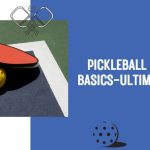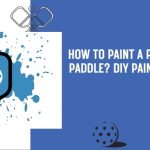Are you looking to take your pickleball game to the next level? Adding lead tape to your paddle is an easy way to customize it and get more out of your shots. Lead tape is a great way to adjust your paddle’s weight, balance, and feel without needing any special tools or skills.
In this guide, we’ll discuss the USAPA rules regarding lead tape for pickleball paddles, why you should add it, how to do it properly and safely, and how to handle it carefully.
Let’s get started!
USAPA Rules for Pickleball Lead Tape
Before you start customizing your paddle with lead tape, you need to know the rules and regulations of the USA Pickleball Association (USAPA). The USAPA is the governing body of pickleball in the United States and sets the standards for pickleball equipment, including paddles.
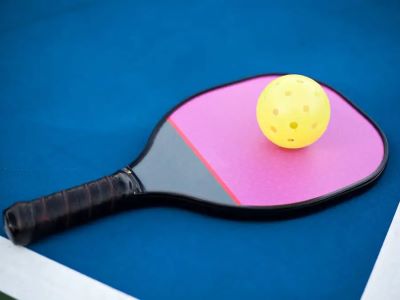
- According to the USAPA rules, you can add lead tape to your commercially made paddle as an alteration (USA Pickleball Rule 2.E.5.a). Lead tape is a thin strip of adhesive metal that can change the weight, balance, and feel of your paddle. However, you cannot make any other changes to your paddle, such as modifying the surface or shape.
- The USAPA rules also state that there is no restriction on paddle weight (USA Pickleball Rule 2.E.4). It means that you can add as much lead tape as you want to your paddle as long as it does not alter the size or thickness of your paddle. The maximum size of a paddle is 24 inches in total length, and the entire thickness of a paddle is 17 millimeters.
Therefore, if you want to customize your paddle with lead tape, you need to make sure that you follow these rules and check your paddle dimensions before and after applying the tape.
Otherwise, you might have an illegal paddle that could disqualify you from tournaments or official matches.
Why Add Lead Tape to Your Pickleball Paddle?
You may want to add lead tape to your pickleball paddle. After all, wouldn’t a heavier paddle make you slower and more tired? Well, not necessarily. Adding lead tape to your paddle can benefit your game, depending on how you play and what you prefer.
Some of the reasons why you might want to add lead tape to your pickleball paddle are:
Increases Power
Adding lead tape to your pickleball paddle can give you more power and pop when hitting the ball. It is because a heavier paddle has more momentum and force when swinging. It can also help you drive the ball harder, hit deeper shots, and put away volleys and overheads.

Improves Balance
Adding lead tape to your pickleball paddle can also improve the balance and feel of your paddle. It is because lead tape can change the center of gravity and the swing weight of your paddle.
Adding lead tape to different paddle parts can adjust the balance point and the head’s heaviness. It can help you find the optimal balance for your comfort and control.
Enlarges the Sweet Spot
Adding lead to your pickleball paddle can also enlarge the sweet spot of your paddle. The sweet spot is the area on the paddle face where you get the best contact and response from the ball.
By adding lead tape to the edges or corners of your paddle, you can increase the stability and forgiveness of the paddle. It can also help you reduce hitting shots in the wrong directions, improve accuracy, and make dinking and blocking easier.
How to Add Lead Tape to Your Pickleball Paddle?
Adding lead tape to your pickleball paddle is relatively easy but requires some trial and error. You will need to experiment with different amounts and placements of lead tape to find the best combination for your paddle and your game.
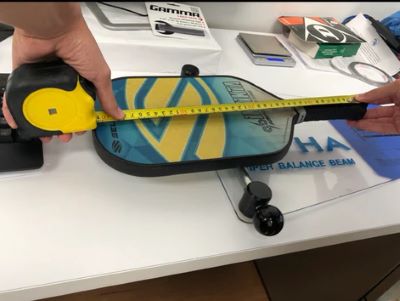
Here are some steps to follow when adding lead tape to your pickleball paddle:
- Step 1 – Get Some Lead Tape: You can buy lead tape online or at a sporting goods store. Lead tape comes in different widths and lengths, usually ranging from 1/4 to 1/2 inch in width and 36 to 72 inches. You can also cut the tape to fit your paddle at your comfort level.
- Step 2 – Weigh Your Paddle: Before adding lead tape, weigh your paddle and note the weight. It will help you track how much weight you add and how it affects your paddle. You can use a kitchen or postal scale to weigh your paddle.
- Step 3 – Decide Where to Add Lead Tape: You can add lead tape to your paddle in different places, depending on the effect you want to achieve. Generally speaking, adding lead tape to the head of your paddle will increase power and head heaviness, while adding lead tape to the handle of your paddle will increase control and head lightness. Add lead tape to the edges or corners of your paddle to increase stability and sweet spot. You can experiment with different locations and combinations of lead tape to find your ideal balance.
- Step 4 – Apply Lead Tape: To apply lead tape, peel off the backing and stick the tape to your paddle. Make sure the surface of your paddle is clean and dry before applying the tape. Press the tape firmly and smooth out any bubbles or wrinkles. You can use scissors or a knife to trim or shape the excess tape to fit your paddle.
- Step 5 – Test Your Paddle: After applying the lead tape, you should test your paddle and see how it feels and performs. You can hit some balls against a wall or play with a partner or a machine. Pay attention to how your paddle’s weight, balance, and feel change with the lead tape. You can also weigh your paddle again and compare it with the original weight.
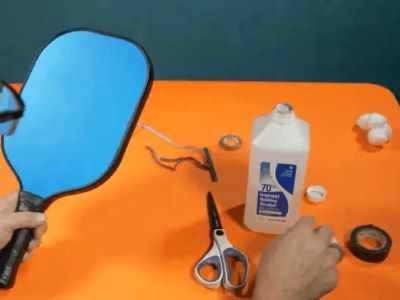
- Step 6: Adjust as Needed: If you are not satisfied with the results of adding lead tape, you can always remove it or add more. You can peel off the tape quickly and reapply it to a different location or amount. You can also layer more tape on top of the existing tape to increase the weight. Keep testing and adjusting until you find the best configuration for your paddle and game.
How to Handle the Lead Tape With Care?
Lead tape is a useful tool for customizing your pickleball paddle, but it also requires caution and care. Lead is a toxic metal that can cause health problems if ingested or inhaled. Therefore, you should follow some safety tips when using lead tape for your paddle:
- Wear gloves when applying or removing the lead tape. It will prevent direct contact with the lead and avoid skin irritation or absorption.
- Wash your hands thoroughly after handling the lead tape. It will remove any traces of lead from your fingers and prevent accidental ingestion or transfer to other objects or surfaces.
- Avoid touching your eyes, nose, mouth, or food when handling lead tape. It will prevent any exposure to lead through these routes.
- Store lead tape in a sealed container or bag. It will prevent dust or particles from escaping and contaminating the air or other items.
- Dispose of lead tape properly. Do not throw away lead tape in the regular trash or recycling bin. Instead, contact your local hazardous waste facility or collection center and follow their instructions for disposing of lead tape safely and legally.
FAQs
Yes, you should consider adding lead tape to your pickleball paddle. The lead tape helps to add weight and balance your paddle, which can help improve power and control while playing.
The amount of lead tape that should be added to a pickleball paddle depends on the player’s preference for weight and balance. Generally, adding between 1/4 to 1/2 ounce of lead tape per side is recommended.
Lead tape adds weight to a pickleball paddle, allowing players to customize the weight and balance of their paddle for increased control while playing. It is beneficial for players who struggle with wrist strain, as the added weight can help to reduce fatigue. Additionally, the weight can create more power when hitting shots.
Wrap Up!
This guide has taught you how to use lead tape to customize your pickleball paddle. Lead tape can change your paddle’s weight, balance, and feel and improve your performance.
You must follow the USAPA rules and safety tips when applying and handling lead tape. You must also experiment with different lead tape configurations to find the best one.
Thanks for reading this guide and we hope you learned something new. Have fun with your customized paddle!

I am a professional physiotherapist and the author of the BallSportsPro. I worked with athletes of all levels, from amateur to professional, and i helped them overcome injuries and improve their performance. I am a certified Pickleball instructor and has been playing the sport for over 10 years.


